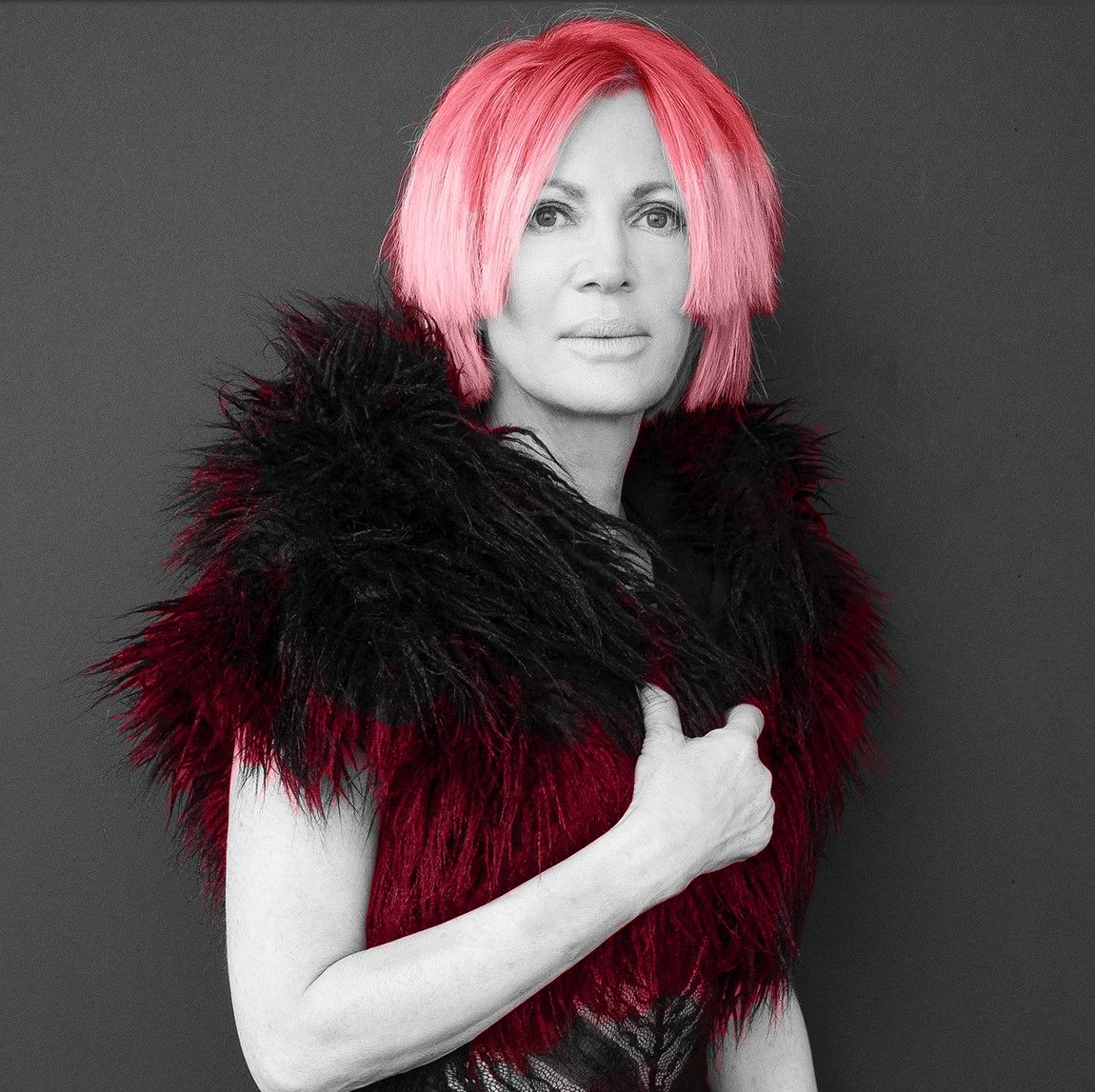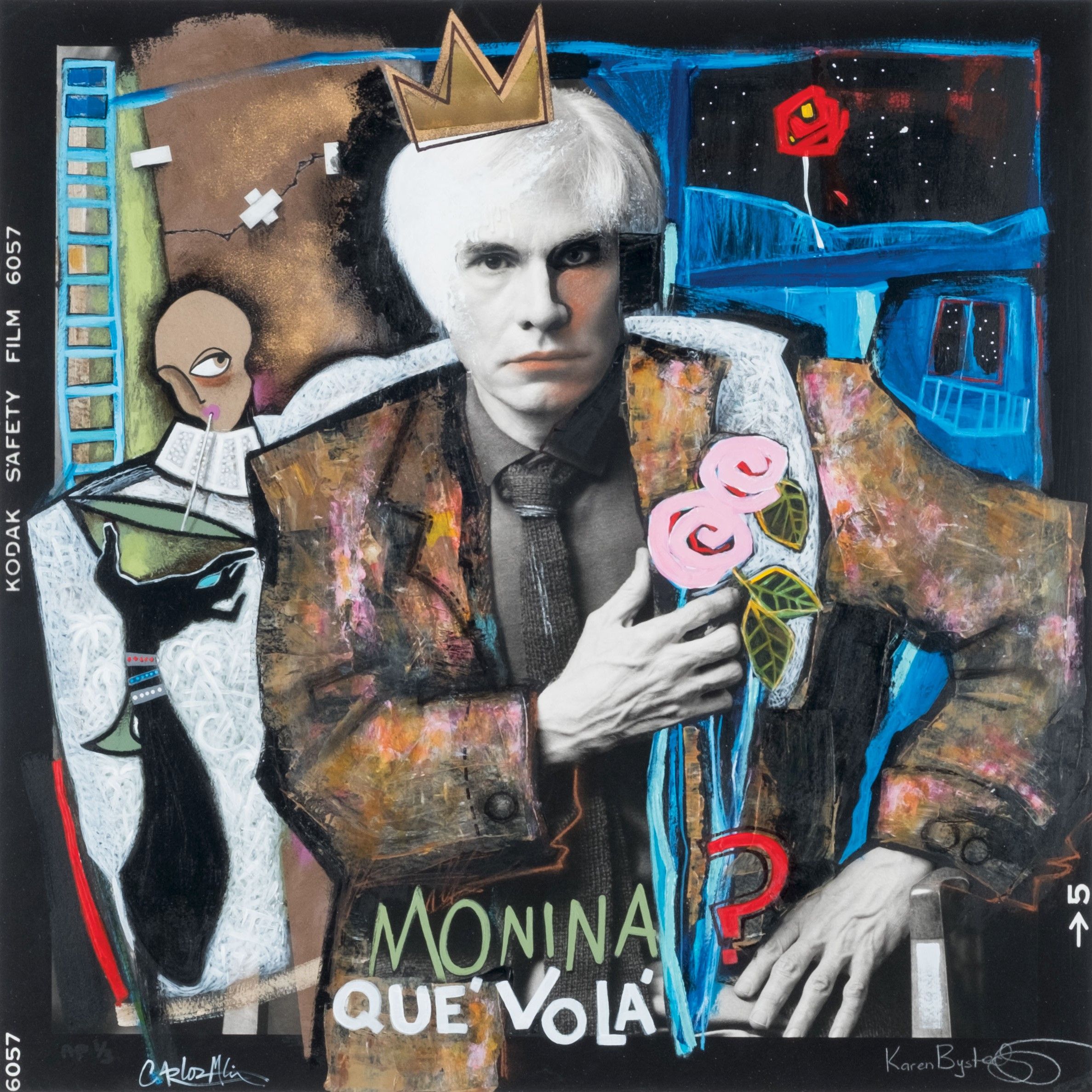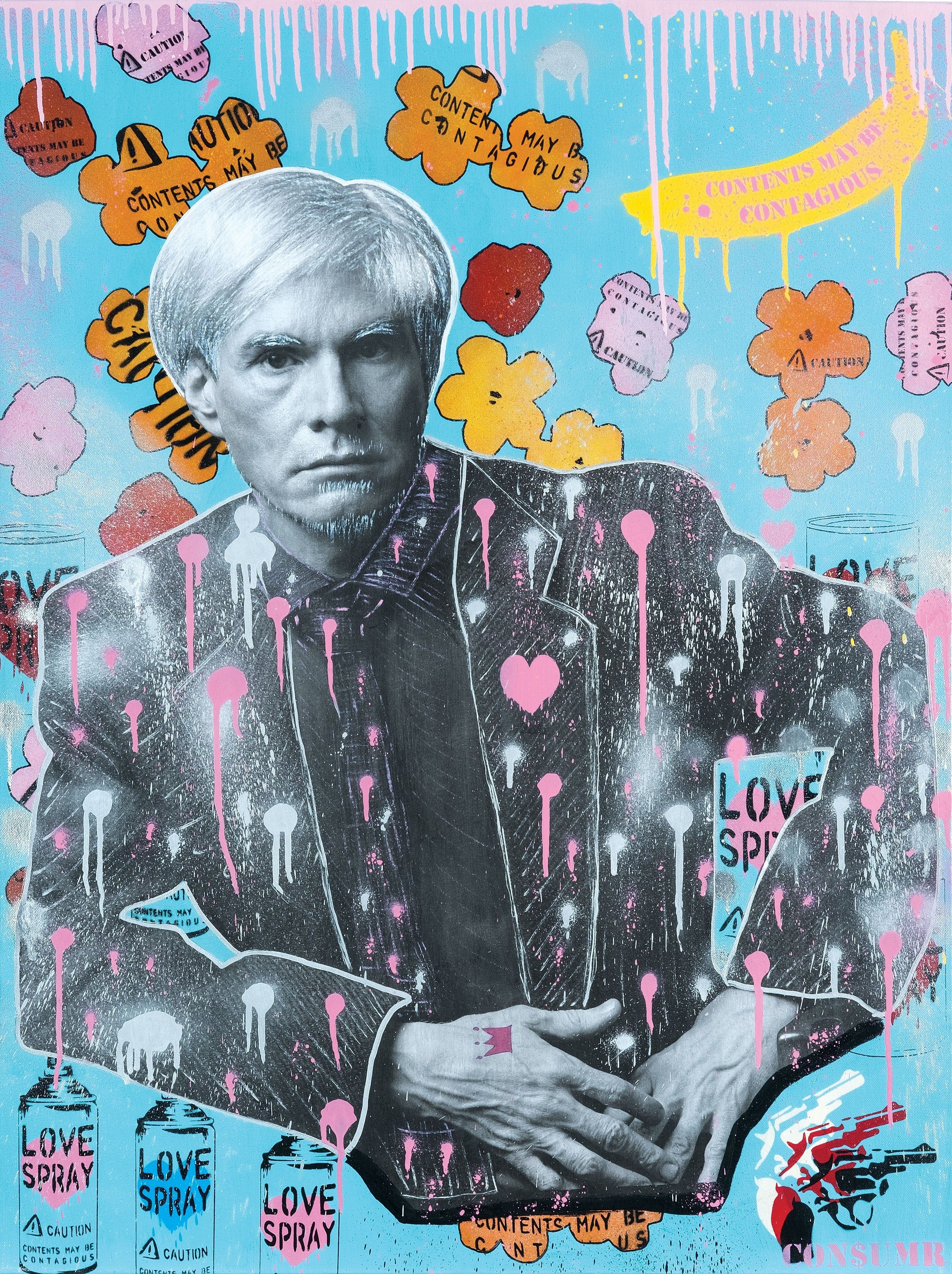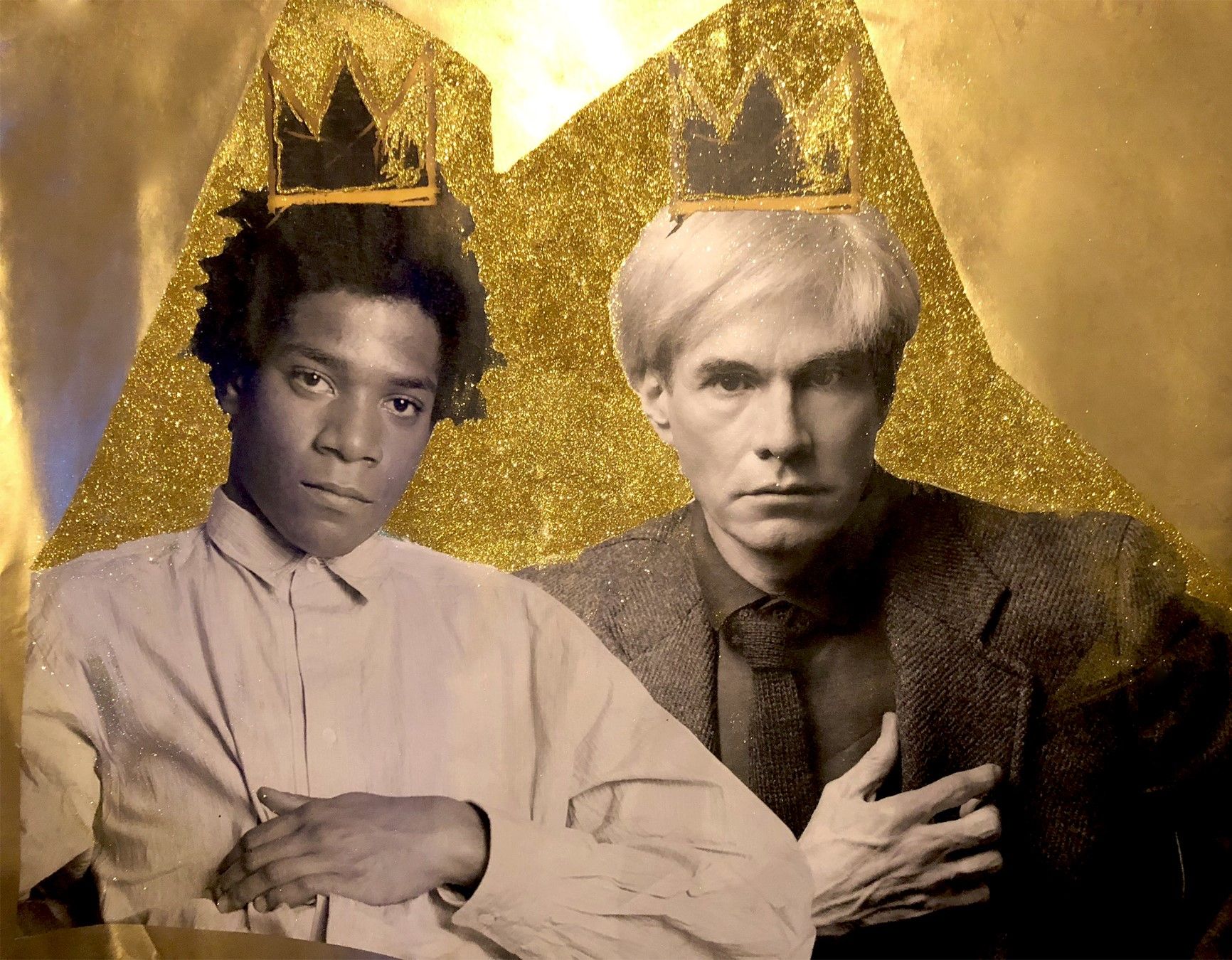
In the 1980s, a young student at NYU would make a cold-call to a magazine that would change her life forever, and continue to resonate across the many decades that followed. That student was the American photographer and artist Karen Bystedt, and the call was to none other than Andy Warhol, who agreed to sit for a shoot for a book-in-progress she had conceived that focused on portraiture of the biggest male models of the era. The shoot would produce 36 unusually intimate and vulnerable images of the most important artist of the 20th century, the negatives of which were then lost to the world for some 25 years. In fact, it wasn't until the early-noughties that Bystedt would unearth ten surviving negatives buried in an over-laden garage, which, once restored, garnered attention from every imaginable quarter of the art world. This month, those images once again provide the source for radical re-interpretations of Warhol, by a selection of international contemporary artists including MAXIM, James Mylne, Peter Tunney, and Miguel Paredes. Curated by Bystedt for Ad Lib Gallery in Wimbledon, the show forms part of the artist's ongoing mission to manifest new futures for her portraits that celebrate her subject’s inventive spirit – paying homage to the mixed media form so inextricably associated with his legacy. Here, the inimitable creative force shares with us her memories of the day she shot and interviewed a legend, and explains why, on some level, she believes his sprit has been guiding her all along.
How did you first become aware of Warhol and what was the genesis of the journey towards shooting portraiture of him?
I was a student at NYU in the 80s, but I was also a club kid, so I was going out a lot. I would see Andy out quite a bit, and although I knew that he was a famous artist, the fact he was on the social scene did make me feel that he was somewhat accessible. I was getting into photography, and had already been picked by an agency, who told me I had real talent shooting men, so I decided to get an internship, and wound up assisting the fashion photographer Marco Glaviano, who did a lot covers for Harper’s Bazaar – pretty much every huge model came though his studio. At that time, there was this big thing happening with female supermodels, and I thought, why not do the same with men? I conceptualised a book project focused on male models, and had the access to enrol a lot of the top male models to shoot with me, and have me interview them. Then, one day, I just saw this Barneys ad in GQ with Andy as a model, and a light bulb went off. I was like, wow, I need to get him for the book. In 1983, I published Not Just Another Pretty Face, about the 20 sexiest men in America, and I put Andy in there.

How did you go about getting Warhol to sit for you?
Well, this was the era when Andy was most known for doing Interview magazine, and creating his incredible portraits for the covers. So, I simply called up the magazine – not expecting him to answer, of course – and I believe it’s always been kind of a spiritual thing, because he actually answered the phone. I went directly though to him. After getting over my shock, I said, 'Mr Warhol, I’m working on this book on male models and I would really like to photograph you,' and he just said, “Oh … really? Well, who else do you have?” And I said, I’ve got Jeff Aquilon, Rick Edwards, and rattled off these huge names, and then he just said, “ … okay.” Three weeks later, I went to meet him at Union Square, with a Hasselblad I had rented, and a guy to help me set up the lights. When we arrived, Andy had that kind of pancake make-up on that he was known for, and I bravely asked if I could smooth it out with a tissue. He was so taken aback, but he did let me. I think mine was one of only a handful of sittings he did in the 80s, and it was kind of rare because he chose to wear this very neat wig, which you don’t see often. It’s usually the kind of messy, crazy wig you see in images – but this one was very neat, because he wanted to look his best.

You interviewed him for the book also, what was that like – what were your first impressions of him?
Well, I interviewed Andy for the book, but to be honest, I was a little intimidated, and mostly trying to get my head around a photographic medium I wasn’t used to, so I could make him as beautiful as possible. I asked him what his vital statistics were, which I did for each model – so, I asked him what his hobby was and he said, everything I do is a hobby, and I asked who his favourite actor was, and he said Mickey Mouse. He was very unusual in that he didn’t speak a lot, so when he did speak it was with real intent and consciousness. He wasn’t like a normal person, in that sense. But then, when I listened back to the tape, I realised that everything he was saying was brilliant, and so thought out. I mean, there are mixed things people say about Andy – that he wasn’t nice; that he was nice. But I always felt he he was very inclusive – I think even though he seemed distant, he had a very sensitive understanding of people, and also saw the big picture and how pernicious, caught-up and brainwashed buy advertising people can be.
How did you lose the negatives from the shoot, and what was the catalyst for you to seek them out?
The reason I lost track of the negatives is that I have always lived very much in the moment, and I moved around a lot. After publishing Not Just A Pretty Face, I started to create books on actors – The New Breed, Before They Were Famous and They Dared To Dream. And I photographed and interviewed people I felt would have huge careers, and these were people like Brad Pitt, Robert Downey Jr, Johnny Depp and Keanu Reeves, who all shared this very clear vision of what they wanted to do. Years later, in 2011, I did some spiritual work with this ex-Tibetan monk, and he said I had kind of fallen asleep, and that I had more to give the world artistically. I started to do this physical yoga energy release work with him, and it was true: I had kind of lost myself after an unhappy marriage. It was life changing – he really did jumpstart me. Then, one day, I read in The Financial Times that one of Andy’s self-portraits had sold for 38million, and I literally panicked, because I suddenly recalled the negatives, and I didn't know where they were! I had a garage in LA packed to the rim with storage, and manically started looking in every box. I think it was on day three or four of this campaign to find them that I finally found a little cardboard box that had just ten of my 36 negatives in them – some were in those old wax sleeves, and had been damaged by termites, but some, thank God, were covered in plastic.

Can you talk us through the journey from finding the negatives again to the collaborative artworks in The Lost Warhols?
Well, I think Andy’s spirit started guiding me immediately, because I was somehow introduced to the archival guy from the Getty museum, who worked on the images over four months to get rid of any imperfections. It was a fascinating process. He would literally work on them pixel by pixel meticulously. I noticed that Andy started to look a bit better, so I then made the artistic decision to have him clean up the skin, because these were always supposed to be the modelling photographs of Andy – so that was a creative choice I made as an artist that kind of went back to me wanting to smooth out his make-up on the shoot. Then all these amazing things just started to happen, with one kind of leading to the next. The first thing was that the Andy Warhol Museum wanted one of each image, and then I got invited to do two charity auctions, including one at The Prince Albert Foundation in Monaco. Weirdly, a friend of Marco Glaviano actually bought one, and he called Marco at the auction and put him on the phone with me – the guy I had apprenticed right at the beginning! Then, some time after that, I suggested to Peter Tunney that he screen print live over one of my photos at Art Basel, and some young artists saw that, and also wanted to collaborate. It was just weird. I do believe in some way Andy was helping me, and I just thought, I’m going to go for it, I’m going to do Andy goes street, and let all these artists paint on top of my photographs, because I just felt it was cool, and that Andy would like it. Because, you know, he was really about collaboration and inclusivity. I think that's why art is so important, actually – because it is one of those places that can bring people together.
The Lost Warhols exhibits at Ad Lib Gallery until June 18th
@thelostwarhols @karenbystedt
Images (top to bottom):Pink Hair, Karen Bystedt. Carlos Manuel (detail), Karen Bystedt; Consumer Art, Karen Bystedt; Geometric Gold Kings, Karen Bystedt with an original photograph of Basquiat in collaboration with the Brad Branson Estate. All images courtesy of the artist and Ad Lib Gallery.